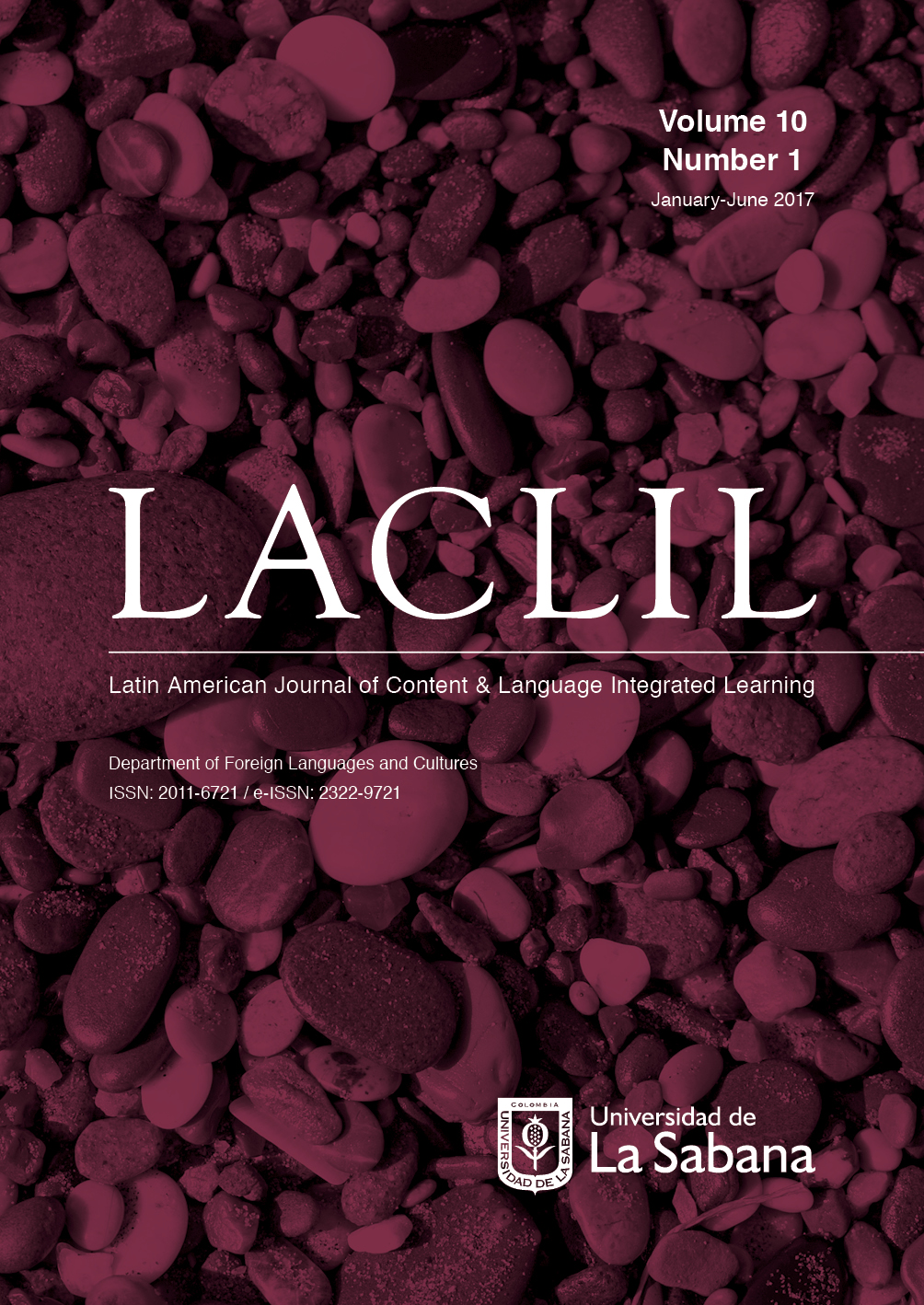Using WhatsApp to Create a Space of Language and Content for Students of International Relations
DOI:
https://doi.org/10.5294/laclil.v10i1.7543Keywords:
CLIL, Scaffolding, WhatsApp, Community of Learners, International RelationsAbstract
For language learners of this generation, the smart phone represents a key cul- tural artefact that complements the learning process. Instant messaging applications such as WhatsApp are widely used in personal, professional and, increasingly, academic circles to maintain constant contact among friends, colleagues, or classmates. This study seeks to analyze how a group of 19 International Relations students and their teacher utilized a WhatsApp chat group throughout their semester-long English class. The group was conceived of as being an extension to a Community of Practice. On a basic level, the chat group was to be used as a shared space in which learners could practice their use of new phrases or vocabulary learned within the class in relation to real life issues connected to themes associated with International Relations. The space could also be interpreted as a virtual ZPD (Zone of Proximal Development) in which learners were scaffolded by their teacher as well as their classmates. Finally, the group provided a space in which learners could engage dialogically and more openly in a truly collective, recip- rocal, supportive, cumulative, and purposeful manner. This qualitative study analyzed both in- teractions within the group and student re ections on its effectiveness, which served to indicate that such a group space can lead to effective learner scaffolding, increased learner participation, and the formation of an advantageous community of learners.
Downloads
References
Alexander, R. (2008) “Talking, Teaching, Learning”, [online] Available at https://learn2.open.ac.uk/pluginfile.php/1227099/mod_resource/content/1/READING_10.pdf
Coffin, C. (2009) Contemporary Educational Argumentation: A Multi-Modal Perspective [online], Available at http://link.springer.com.libezproxy.open.ac.uk/article/10.1007%2Fs10503-009-9161-z
Coyle, D. (2002) Content and Language Integrated Learning: Motivating Learners and Teachers.
Crystal, D. (2003) Why a Global Language in Cook, G. & North, S. (eds) (2010) Applied Linguistics in Action: a Reader, Milton Keynes, Routledge, The Open University
Dalton-Puffer, C. (2007) Discourse in Content and Language Integrated Learning in CLIL Classrooms, John Benjamins Publishing, Amsterdam.
Forman, R. (2008) Using Notions of Scaffolding and Intertextuality to Understand the Bilingual Teaching of English in Thailand [online], Available at http://www.sciencedirect.com.libezproxy.open.ac.uk/science/article/pii/S0898589808000776
Gutierrez, K. (2008) Developing a Sociocritical Literacy in the Third Space [online], Available at http://www.jstor.org.libezproxy.open.ac.uk/stable/20068336?seq=1#page_scan_tab_contents
Hall, J. (2012), Teaching and Researching Language and Culture, Pearson, Harlow
Lantolf, P. & Thorne, S. (2006), Sociocultural Theory and Second Language Learning [online], Available at https://docs.google.com/file/d/0B2nL2ay5AweNTnRFMW1JczlmVGM/edit?pli=1
Lave, J. & Wenger, E. (1991), Situated Learning: Legitimate Peripheral Participation, Cambridge University Press, Cambridge
Leander, K. & Wells Rowe, D. (2006), Matching Literacy Spaces in Motion: A Rhyzomatic Analysis of a Classroom Literacy Performance, “Reading Research Quarterly”.
Maybin, J., Mercer, N. & Stierer, B. (1992), “Scaffolding Learning in the Classroom” [online], Available at https://learn2.open.ac.uk/pluginfile.php/1227098/mod_resource/content/1/READING_4.pdf
Morita, N. (2004) Negotiating Participation and Identity in Second Language Academic Communities [online] Available at http://www.jstor.org.libezproxy.open.ac.uk/stable/3588281?seq=1#page_scan_tab_contents
Motterman, G. & Sharma, P. (2009) Blended Learning in a 2.0 World [online], Available at http://eds.b.ebscohost.com.libezproxy.open.ac.uk/ehost/detail/detail?sid=cae41021-8ea4-4ddb-bf4c-9e934e2d1bc2%40sessionmgr114&vid=0&hid=112&bdata=JnNpdGU9ZWhvc3QtbGl2ZSZzY29wZT1zaXRl#db=a9h&AN=44537500
Norton, B. (2000) Claiming the Right to Speak in Classrooms and Communities [online], Available at https://learn2.open.ac.uk/pluginfile.php/1227104/mod_resource/content/1/READING_34.pdf
Vygotsky, L. (1978), “Interaction between Learning and Development”, [online] Available at https://learn2.open.ac.uk/pluginfile.php/1227096/mod_resource/content/1/READING_2.pdf
Wenger, E., McDermott, R.A. & Snyder, W. (2002) Cultivating Communities of Practice: A Guide to Managing Knowledge, Harvard Business School Press, Boston
Downloads
Published
How to Cite
Issue
Section
License
This Journal and its articles are published under the Creative Commons CC BY 4.0 DEED Attribution 4.0 International license. You are free to: Share — copy and redistribute the material in any medium or format for any purpose, even commercially. Adapt — remix, transform, and build upon the material for any purpose, even commercially. The license cannot revoke these freedoms as long as you follow the terms of the license.








